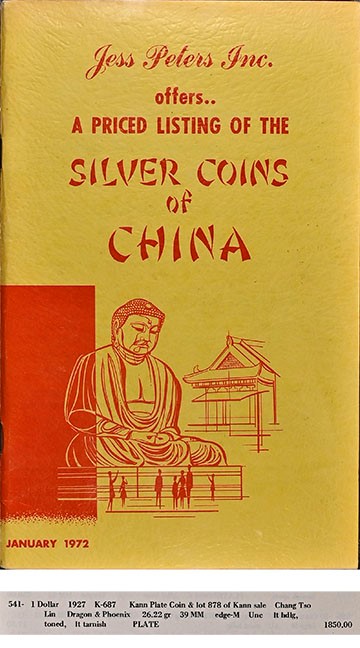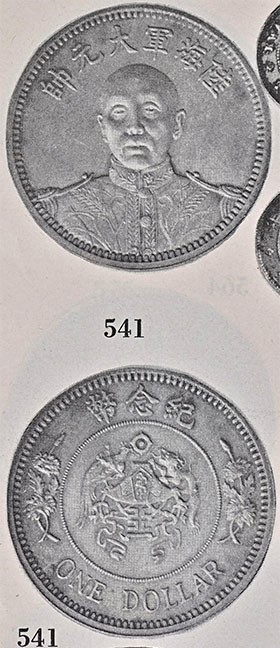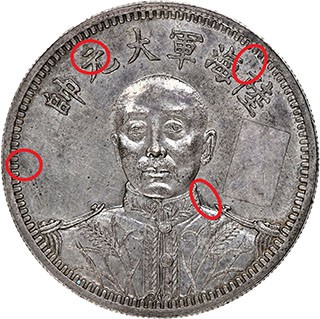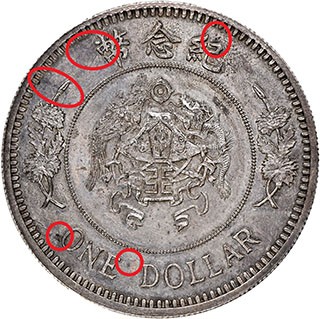NGC Re-establishes Rare Pattern Dollar to Legendary Kann Collection
Posted on 3/7/2022
By
Ben Wengel
Senior Grading Finalizer of World Coins
Tracing and establishing pedigrees can be a very tedious and fruitless undertaking in numismatic research. It requires sufficiently distinctive marks, toning and/or striking characteristics in order to show that a coin is a match to a plate image from a book, auction catalog or other piece of numismatic media.
But before one can even undertake such an endeavor, it is first necessary to find when a certain coin type was in a sale. Once this is done, the coin must have been important enough to warrant being plated — or photographed and included as a “plate” in a catalog or reference work — which was far from guaranteed in physical auction catalogs. If the coin was not plated, then proving a pedigree becomes nearly impossible at this point.
Assuming the coin was plated, the images need to be of a high enough quality to match unique characteristics in a definitive manner. Finally, if the coin’s surfaces have changed in any way after its sale at auction, the ability to definitively match it becomes even more difficult, if not impossible.
These realities demonstrate some of the numismatic hurdles and pitfalls standing in the way of tracing a coin back to an important numismatic cabinet or reference work and can help to explain the excitement of re‐establishing a pedigree, especially when that pedigree is extremely important. Recently, NGC was able to re‐establish a China (1927) L&M‐870 Chang Tso Lin Pattern Dollar to not only the legendary Eduard Kann Collection, but also to his immensely important numismatic reference “Illustrated Catalog of Chinese Coins.”
 |
 |
| China YR16 (1927) Chang Tso Lin Silver Dollar graded NGC MS 62 and pedigreed to the Kann Collection. Click images to enlarge. |
|
Many collectors are familiar with Eduard Kann and are aware of the June 1971 Schulman sale that included his collection. This catalog is highly prized and includes many plates, but obtaining a copy is difficult and expensive — they usually sell for around $100. What collectors may not be aware of is that the January 1972 Jess Peters publication titled “A Priced Listing of the Silver Coins of China” includes many coins recently purchased from the 1971 Kann sale.
 |
 |
| Excerpts from the January 1972 Jess Peters publication titled “A Priced Listing of the Silver Coins of China” Click images to enlarge. |
|
Thankfully, the L&M-870 is plated in both catalogs and is cited as both Ex. Kann and the Kann plate in the Jess Peters fixed price list. NGC has access to a physical copy of the Jess Peters list as well as a digital copy of the Kann sale. By looking at the matching areas of toning, NGC was able to conclusively show that this Chang Tso Lin dollar was in fact the Kann coin, as seen below:
 |
 |
| NGC images showing areas where the toning matched that shown in images from the catalog. Click images to enlarge. |
|
Re-establishing this pedigree shows NGC’s commitment to going above and beyond other third-party grading services to not only undertake numismatic research but also to add value to coins that are submitted to NGC. This Chang Tso Lin Dollar came to NGC without pedigree information, and now that it is known to be the Kann coin, its value and liquidity have increased as a result.
With this coin being offered by Taisei Auction in April, advanced collectors of Chinese coinage will undoubtedly take note and spirited bidding can be expected for this rare opportunity to own not only an extremely rare Republic pattern dollar, but a piece of a numismatic cabinet whose importance cannot be overstated.
Stay Informed
Want news like this delivered to your inbox once a month? Subscribe to the free NGC eNewsletter today!
